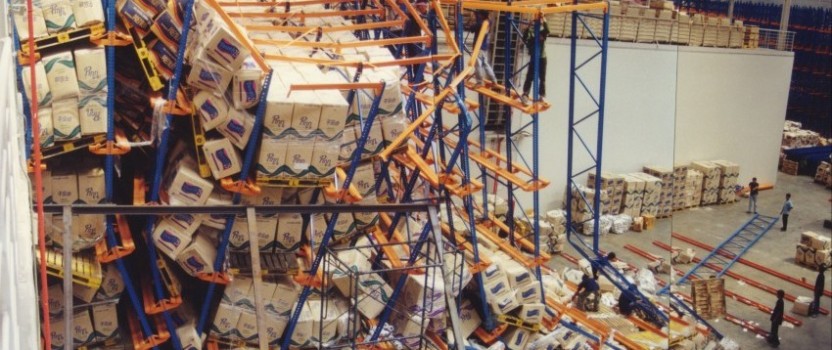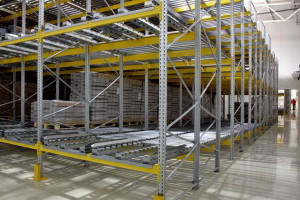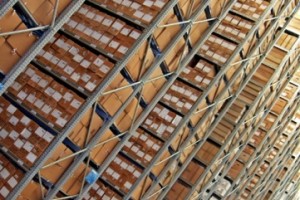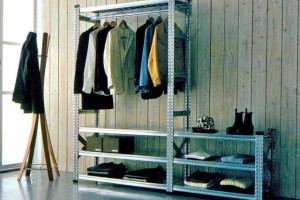3 Mistakes You Should Avoid When Selecting a Storage Solution
Regardless of the products or services your company specializes in, you will always need the means to store items. If you are a partner in a medical or law practice, you may need storage shelves for physical files and records. If you run a data storage facility where you lease space, you will need storage racks for computer and networking equipment. If you and your partner run a small chain of retail automotive supply stores, then you will need a storage system for tires, rims, vehicle parts and many other items of varying dimensions and weights. Each storage need presents different challenges, such as the items being stored, and how they will be accessed by employees or customers.
The point is simple: The need for storage, and planning for it, should never be minimized. At Metalsistem Canada, we are the recognized leader in the Greater Toronto Area for innovative, affordable, and customizable storage solutions for all your needs, regardless of budget or space limitations. Our design team has the expertise to help you determine your requirements, plan for storage, and select the right product.
When it comes to planning for storage solutions, business owners often make three critical mistakes: Lack of planning storage specifications and requirements, not defining the storage process, and choosing the wrong storage materials. Taken individually, none of these would appear to be the end game to running a business efficiently or selecting the right storage shelving, but when they occur at the same time the results can be crushing.
1. Not Planning Storage Specifications and Requirements
Many customers assume that storage specifications and requirements will magically take care of themselves, as if a team of “Storage Fairies” fly into their warehouse overnight and drop off a set of blueprints. It is not that easy, but is less daunting if you know what you will be storing and if you follow these four steps:
- Determine what kind of material handling equipment is needed, such as forklifts, pallet jacks, operator-up machines, or other equipment. The less space you have between storage shelves, for instance, will help determine if it is best to use an operator-up machine (with some models only needing six feet of aisle space to operate in), or a forklift (which may require a span of 12 feet or greater between storage shelves due to turning radius and other factors).
- Plan out your storage racks. Once you know what kind of items you need to store, taking into consideration weights and dimensions, you should then be able to determine how many racks are needed and how many will fit into existing floor space.
- Determine the optimum storage size of your product.
- Make sure your warehouse or other storage facility includes separate areas for receiving and docking (shipping) operations.
2. Not Defining the Storage Process
The storage process is a multi-faceted approach that in a modern warehouse or other facility includes not only physically storing items, but an end-to-end enterprise resource planning (ERP) system that controls and monitors your business and all of its departments. Storage is a major component of any ERP system that a company with storage needs will employ across its organization.
Effectively planning and defining the storage process looks at many factors that will determine warehouse efficiency and how profitable a company is during a fiscal year. Some points to consider include:
- Dock operations, which are a classic example of storage resource planning that is often disregarded until mistakes have been made. The dock is an important hub for unloading and loading product, checking for damage, and verifying the counts of items listed on the delivery receipt.
- Receiving operations. Receiving duties often include the dock functions, and is the starting point for inventory control in the warehouse.
- Storing operations, where product is typically moved from a docking area to a holding area. From there, controls are in place to track items, verify where they should be stored, and get them to right storage location.
Part of the storage process also includes ongoing maintenance of storage shelving and equipment like forklifts, keeping the storage area clean, safe, and efficiently organized and facilities management related to the storage (this would include heating, cooling, and ventilation systems).
3. Choosing the Wrong Materials
From our experience, a critical error that many business owners or managers make is choosing the wrong materials for the products being stored. Keep in mind that certain storage shelves that may be appropriate in a residential environment, such as wood, glass, or plastic, are not suitable in a commercial or industrial warehouse or other types of businesses – unless the units are set up in an office or employee lounge and used to store things like books, CDs, or other small items.
All of the storage systems we design and install are manufactured by Metalsistem using prime quality 3.1B certified high tensile steel coils that meet or exceed EN 10204 standards. Galvanized and rustproof, they are highly customizable and can not only withstand extreme weights – storing items weighing up to 15 tons – but also are certified for use in the food industry to hold refrigerated or frozen products.
Storage requirements for products are normally dictated by the manufacturer, which in turn follows local or federal government standards on containers, boxes, and other storage systems. The materials used to hold product also affect how efficiently a warehouse or other facility operates.
Final Thoughts
Running a company is never easy, as business owners have to juggle a variety of concerns, like profitability, employees (training, payroll), market share, safety issues, facilities management, environmental issues, and even media and community relations. The last thing an owner or manager needs is a poorly planned and implemented storage system.
At Metalsistem Canada, we have years of experience working with companies in a broad range of industries and offer design and installation services to meet your needs.







